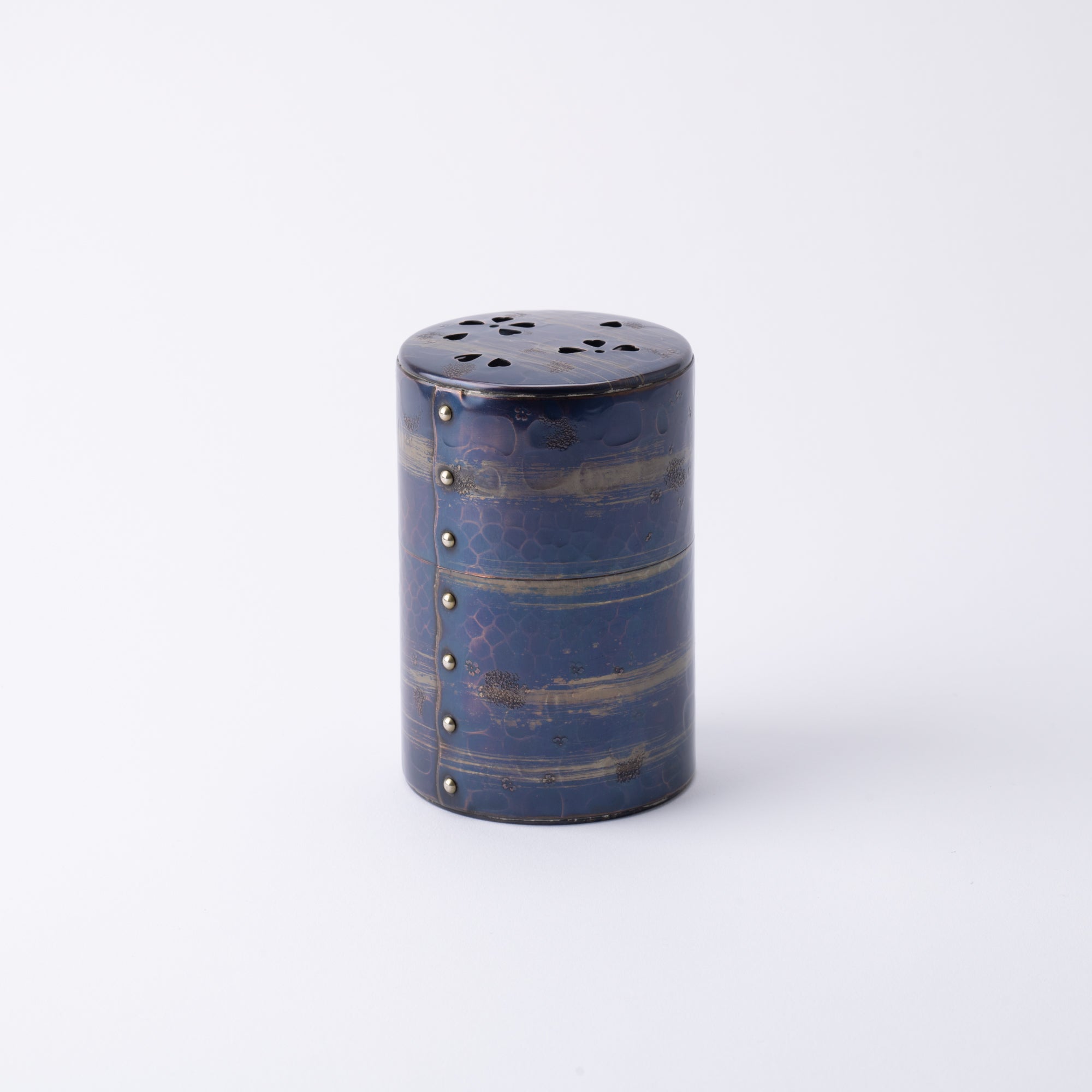
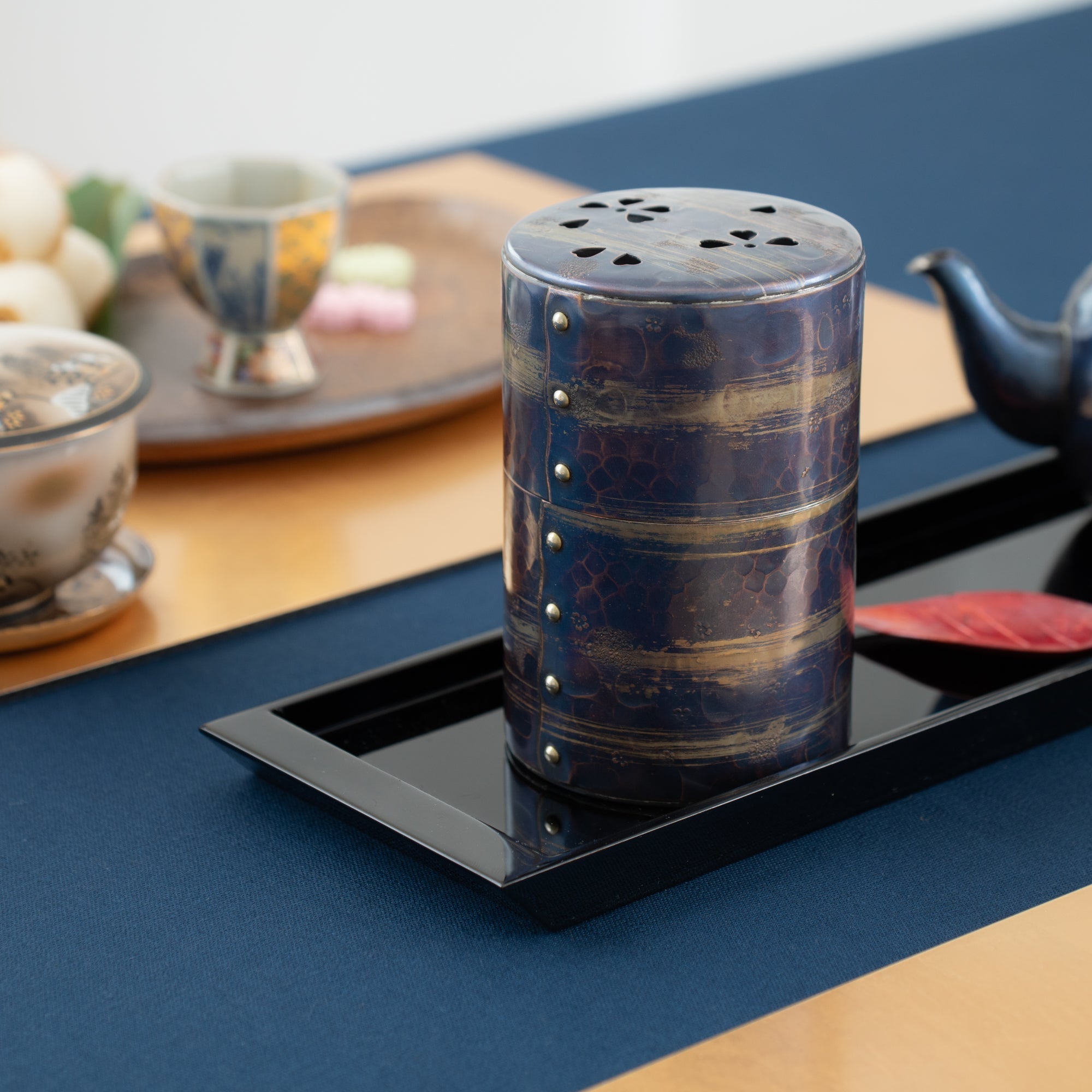
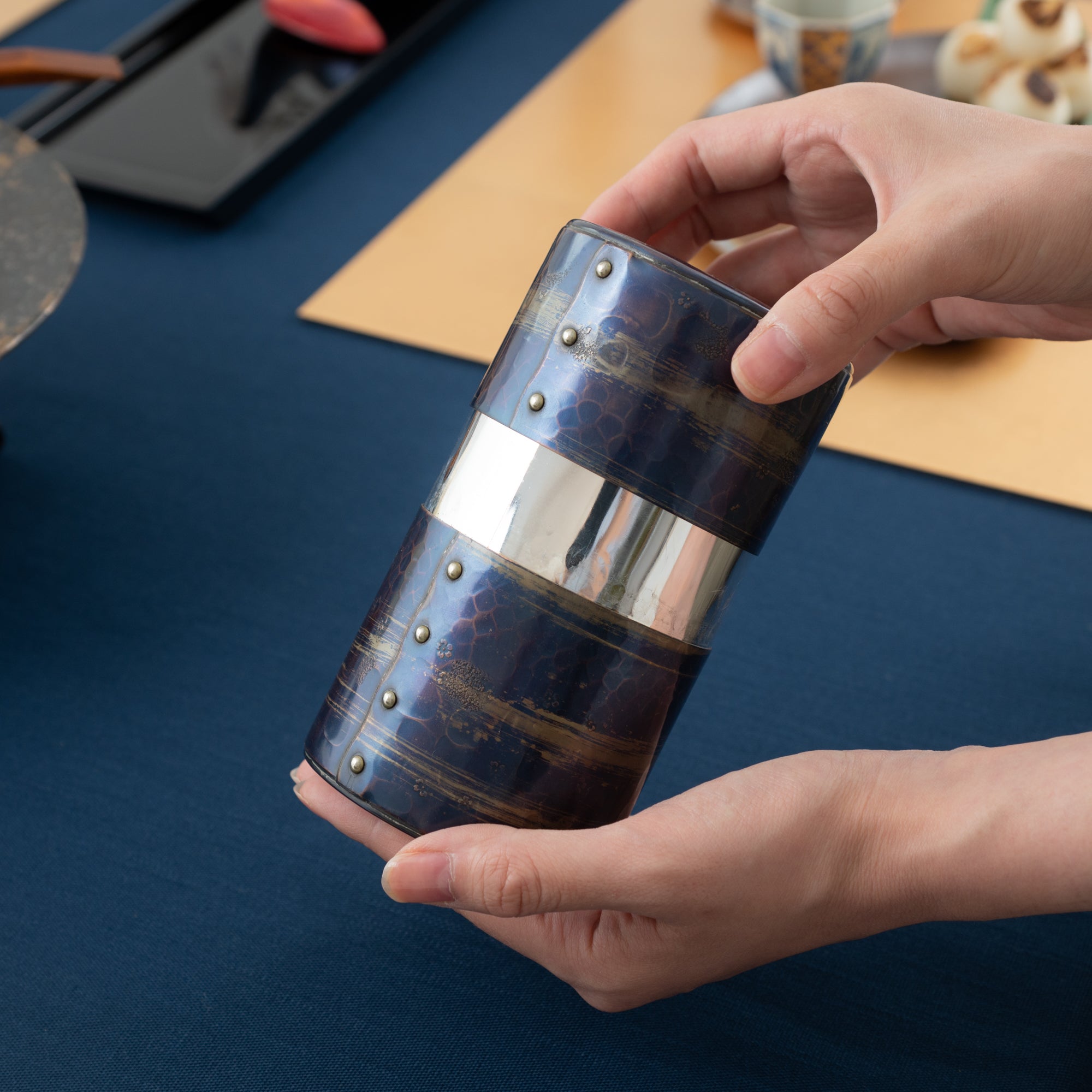
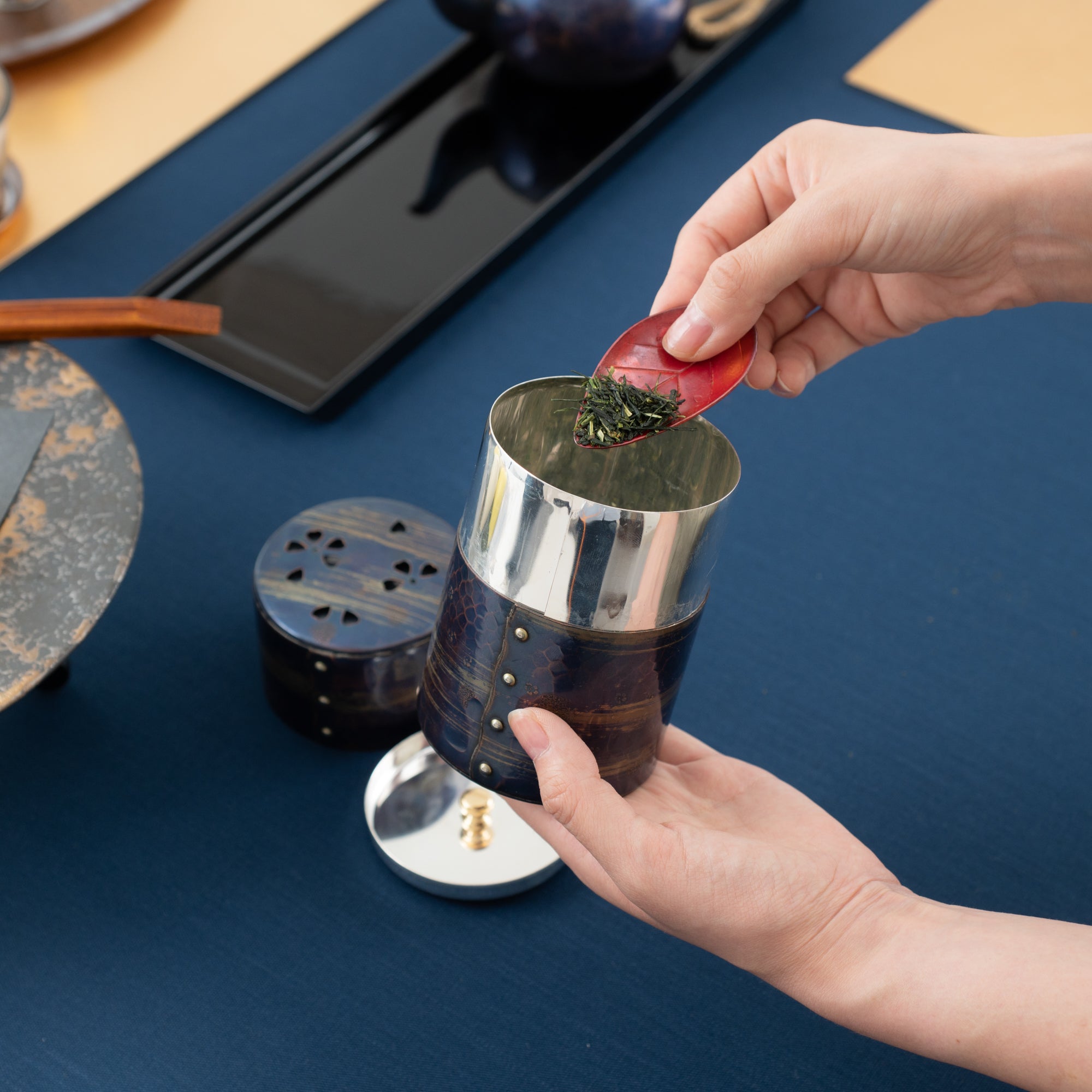
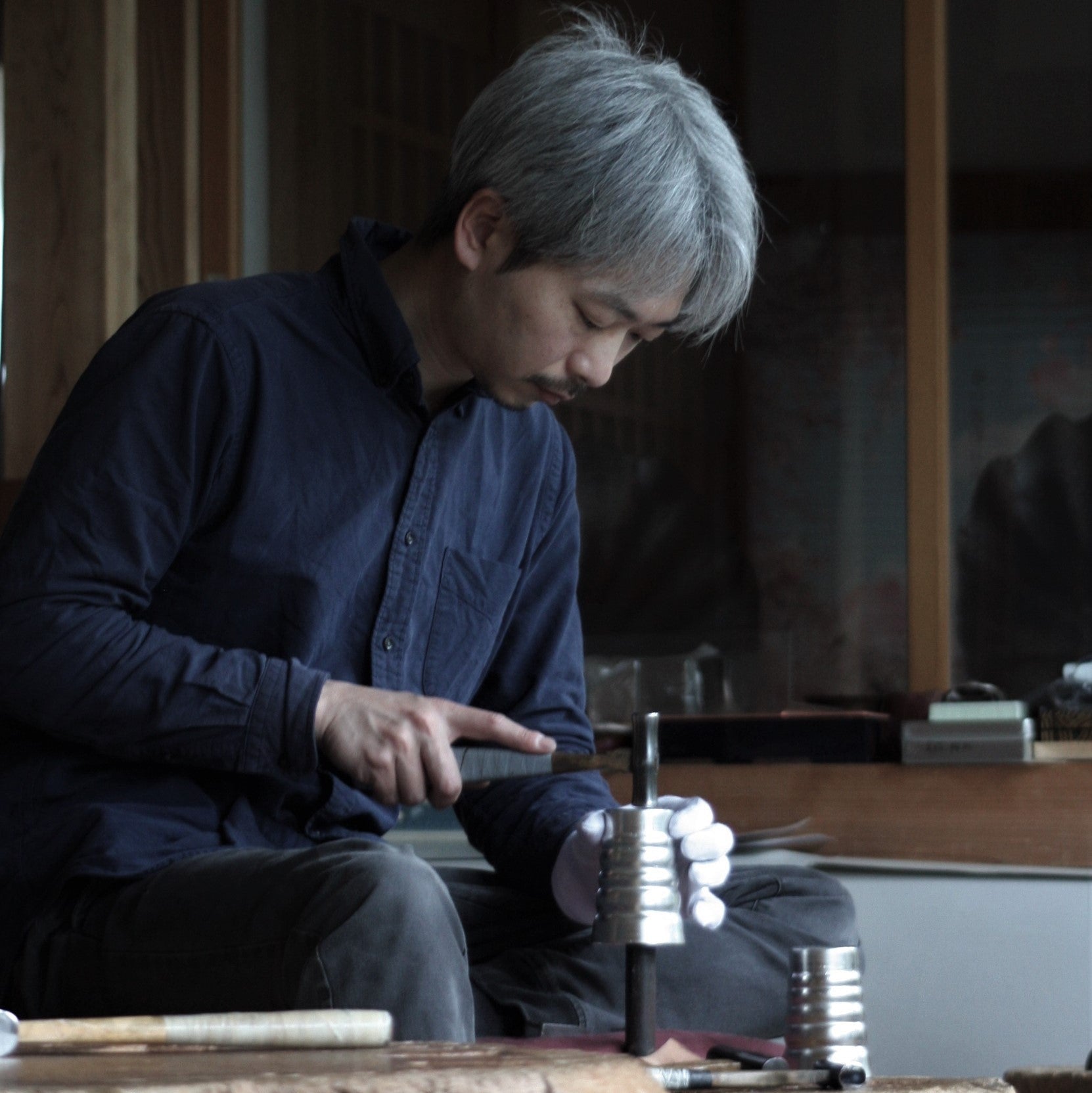
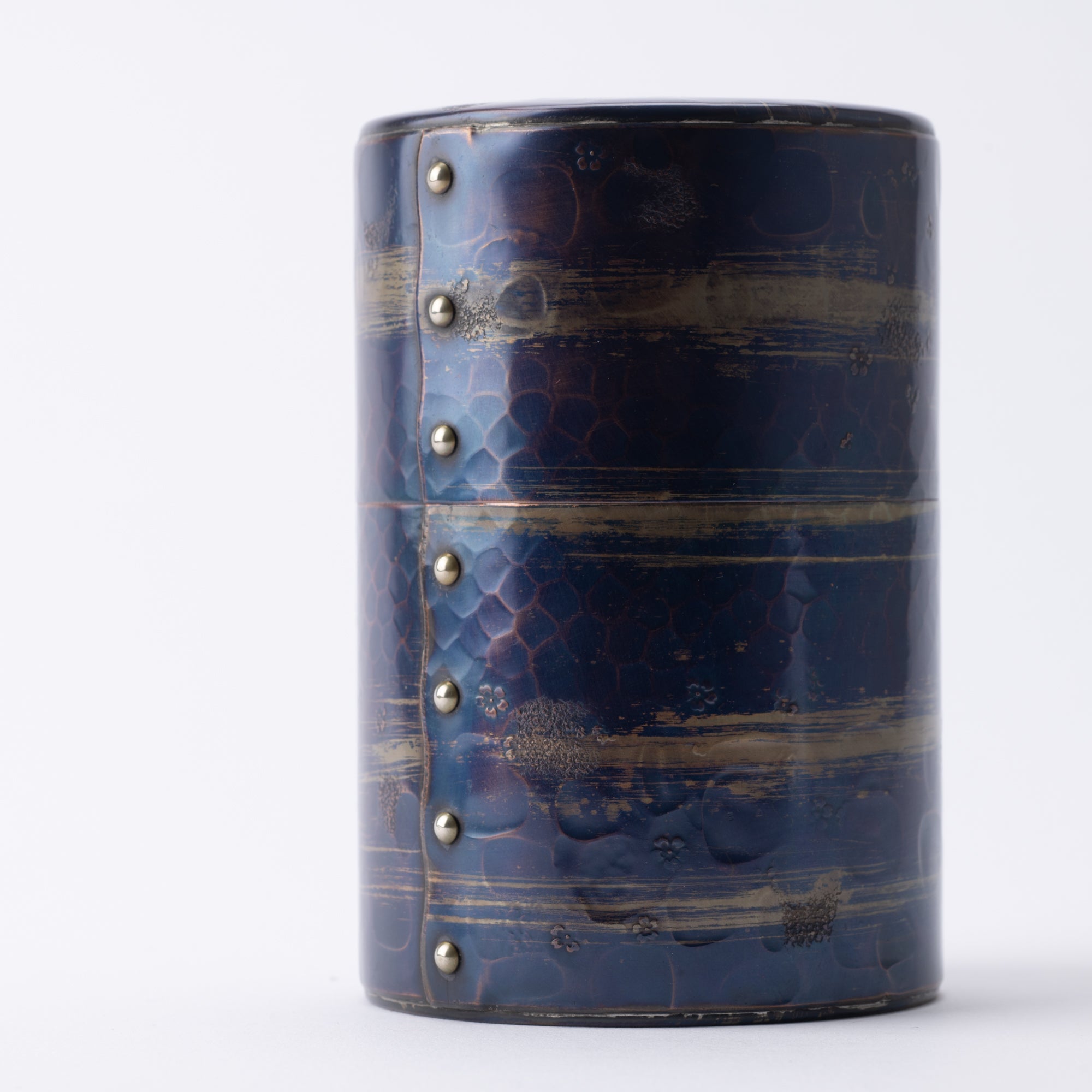
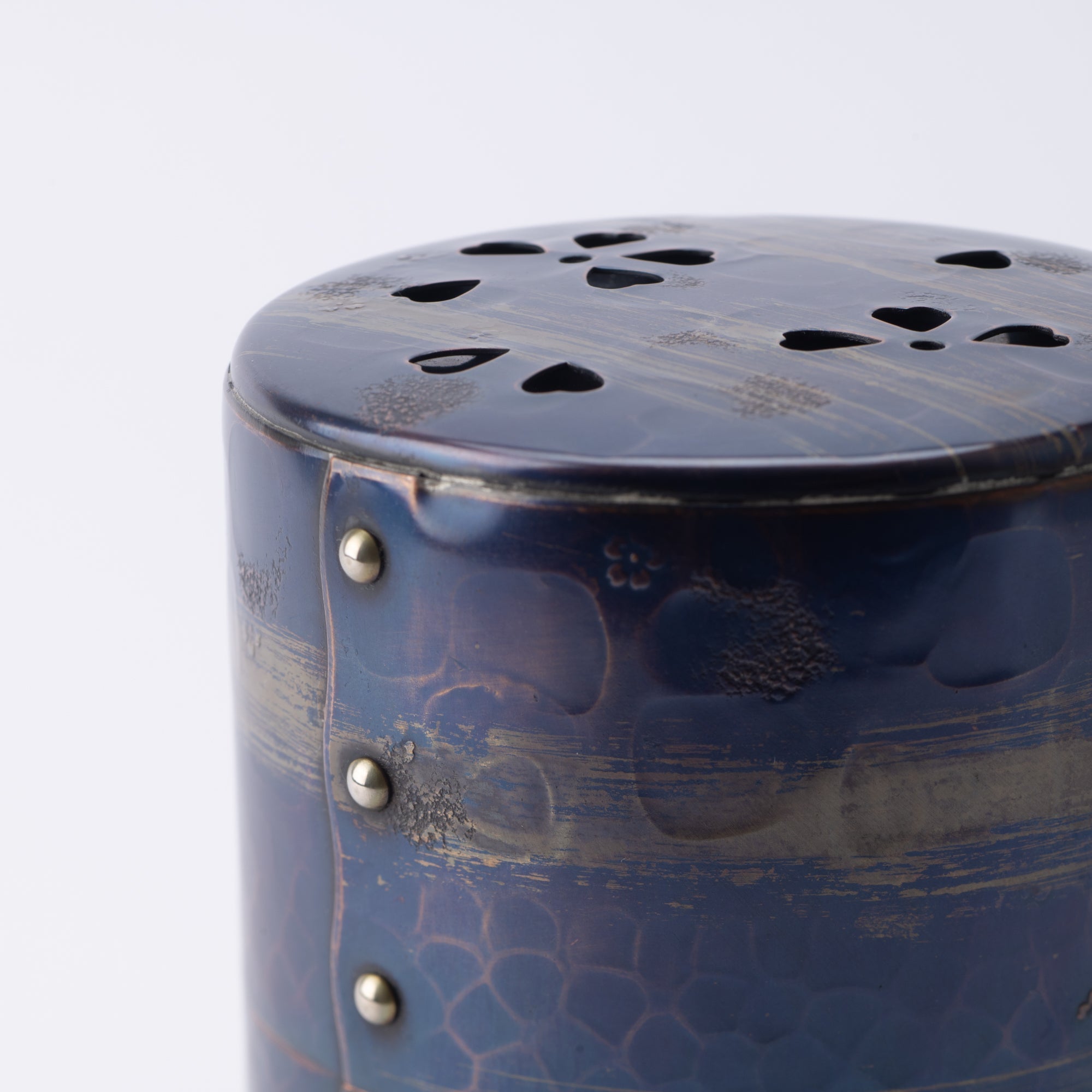
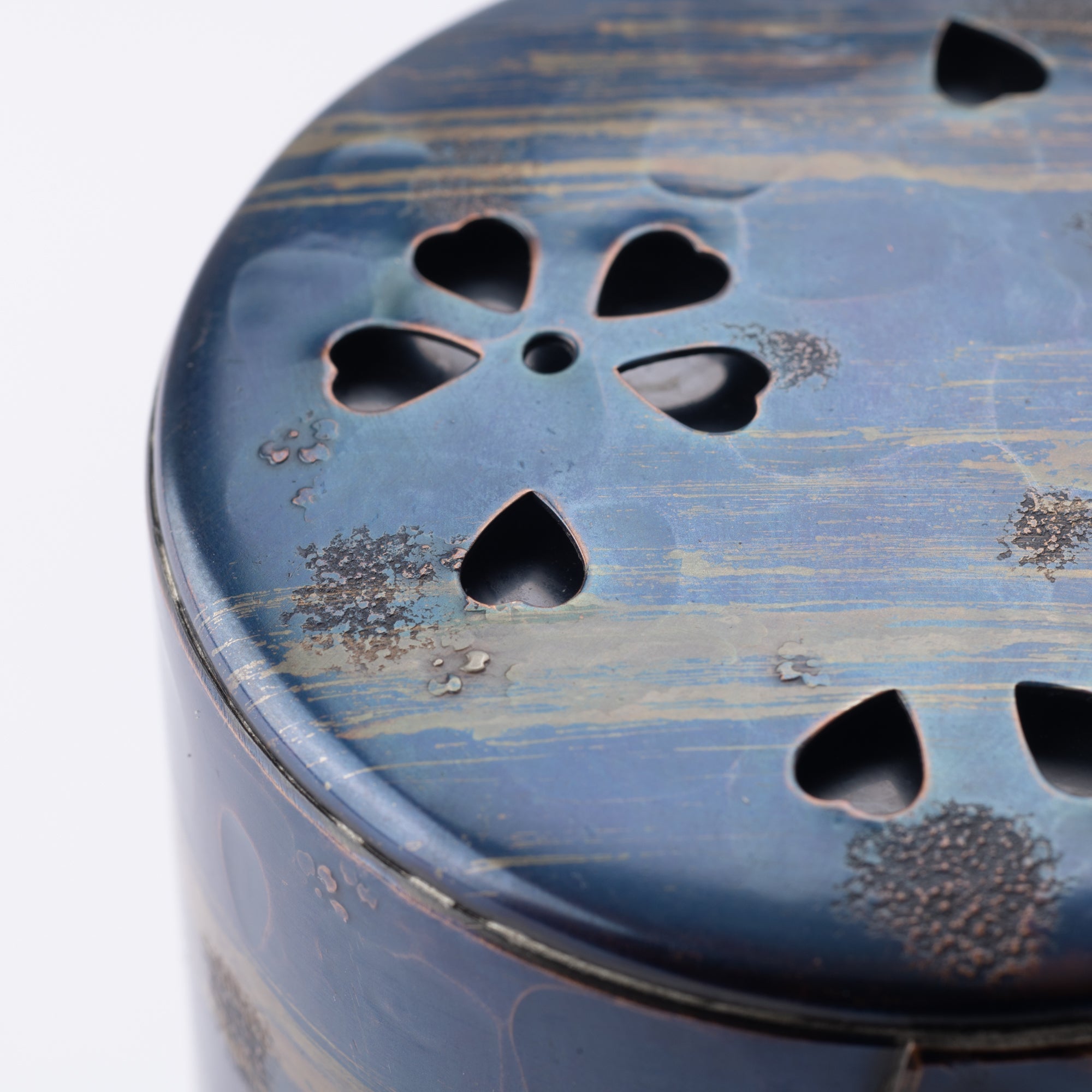
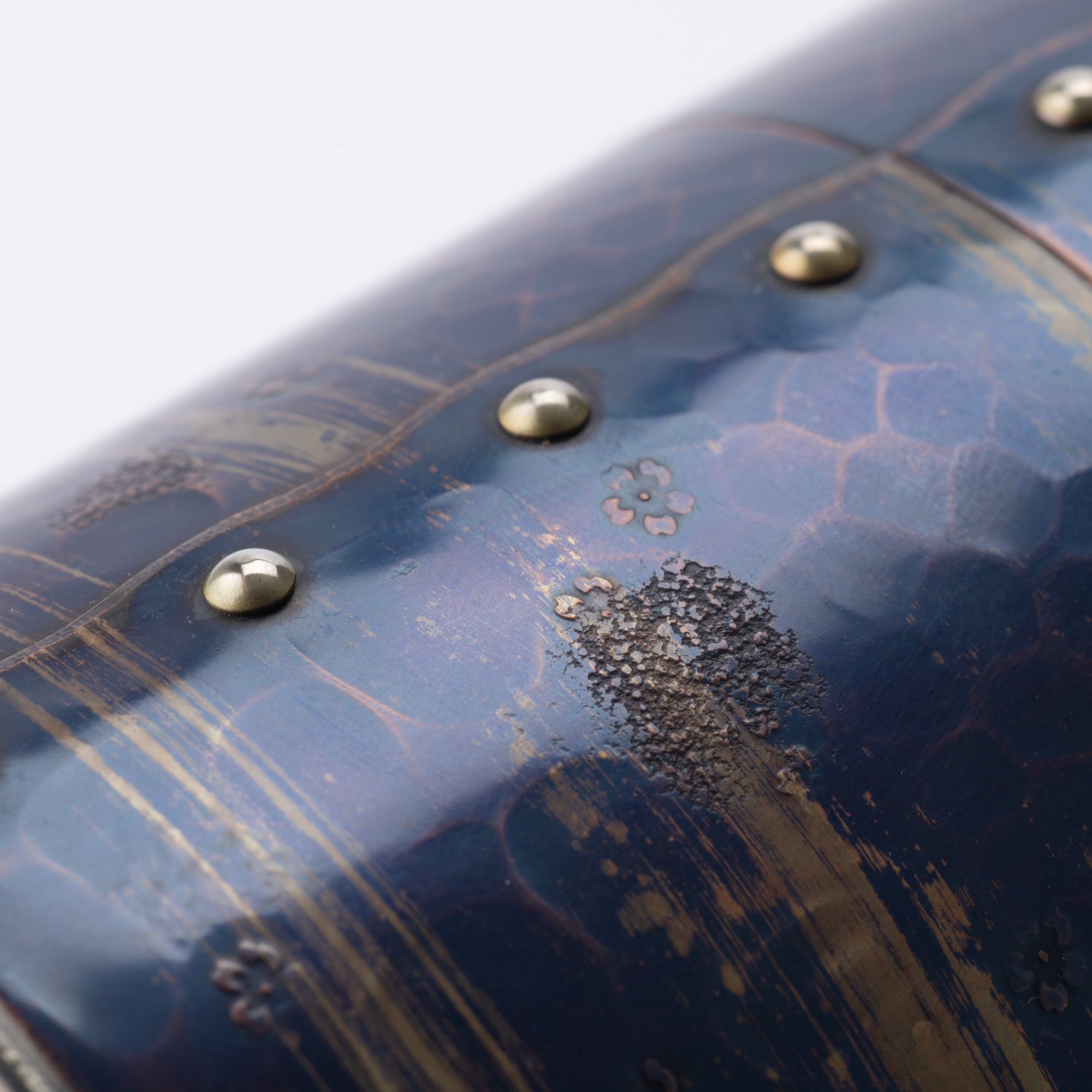
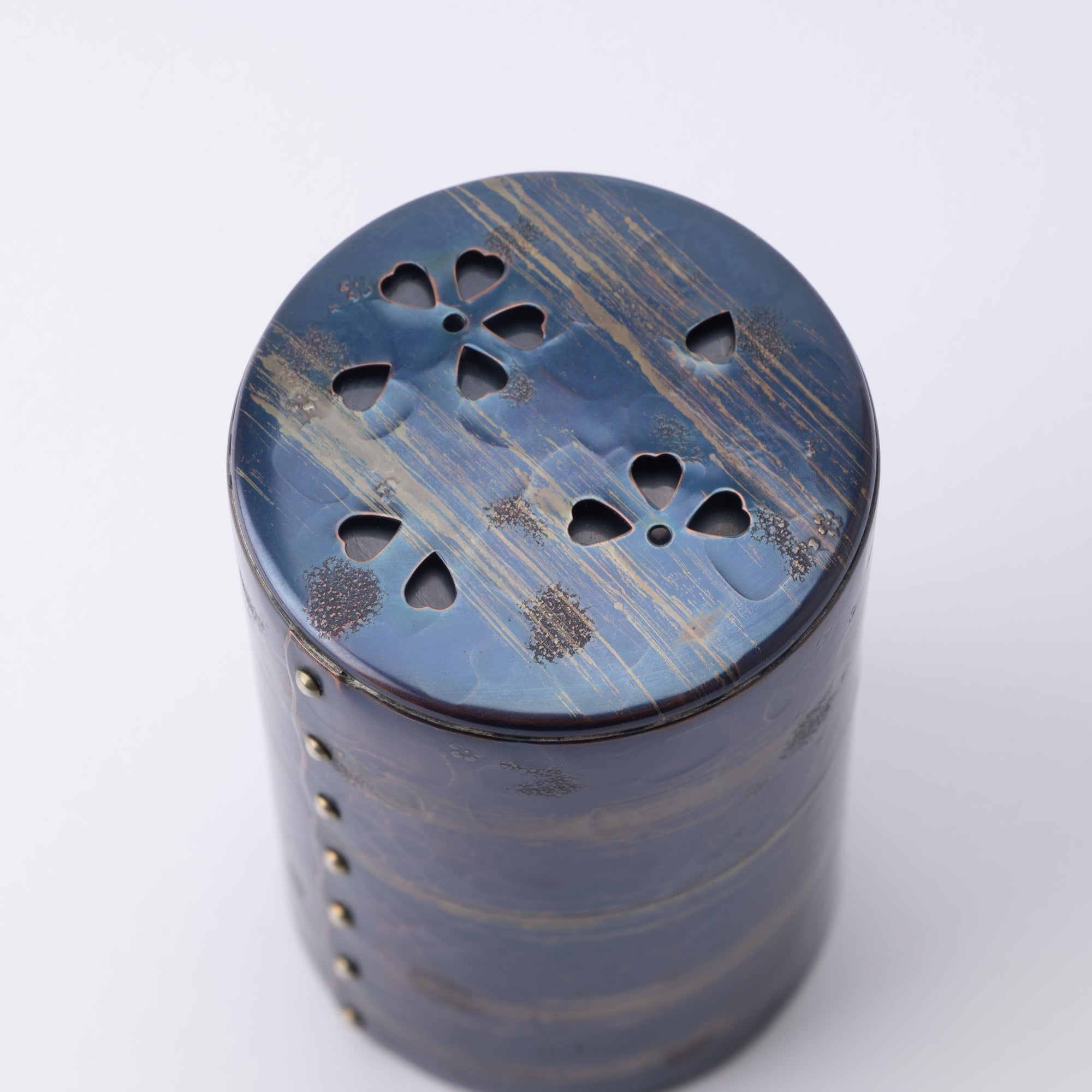
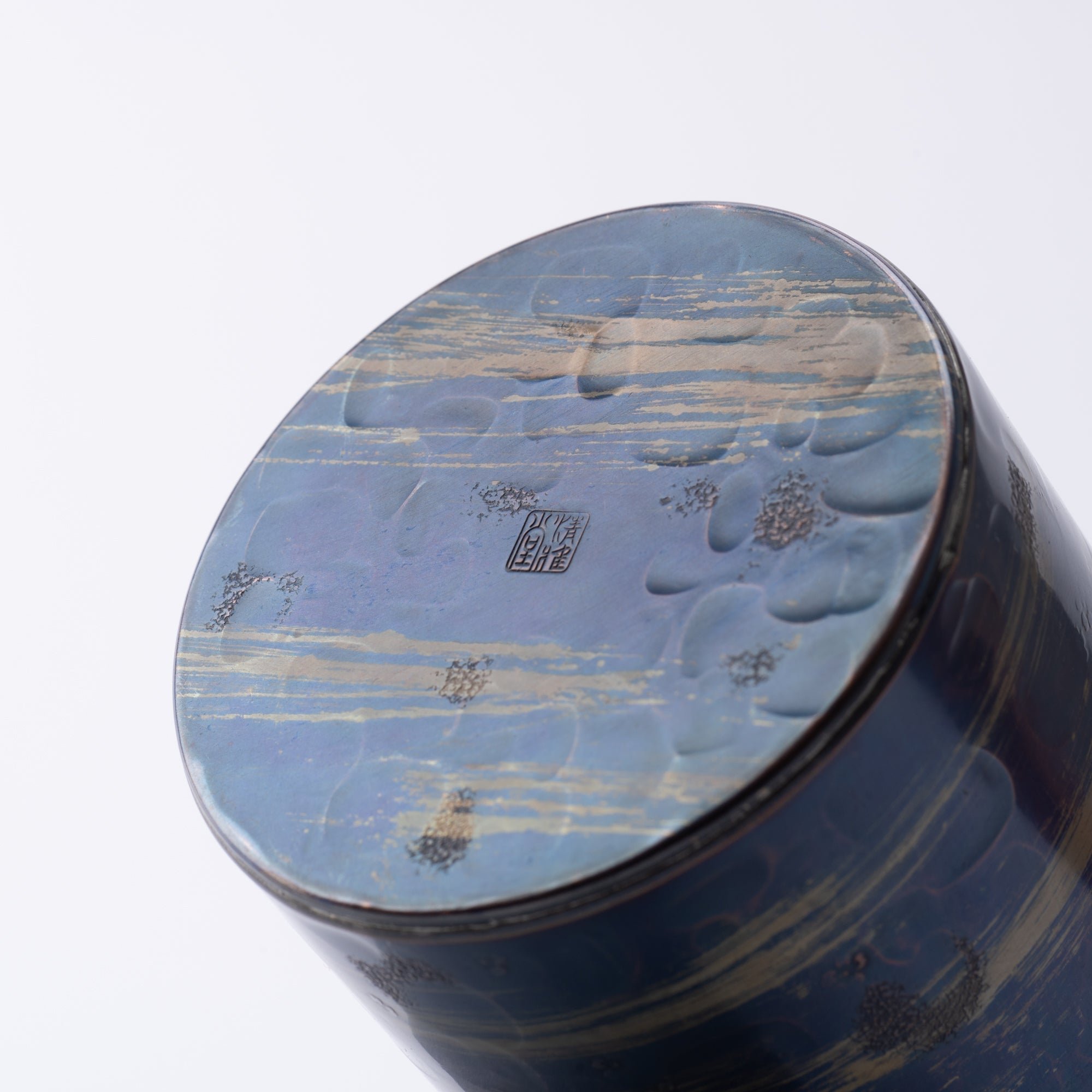
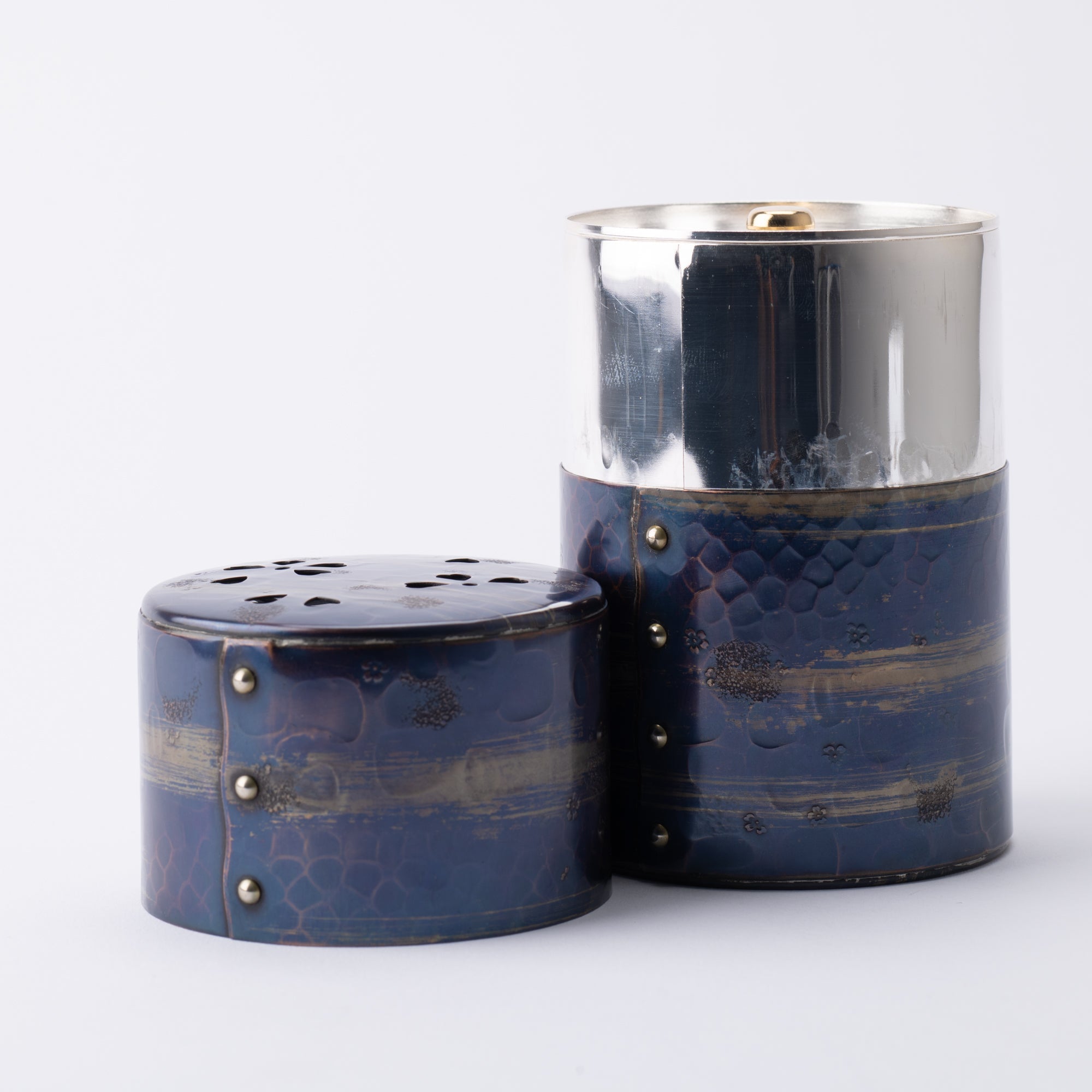
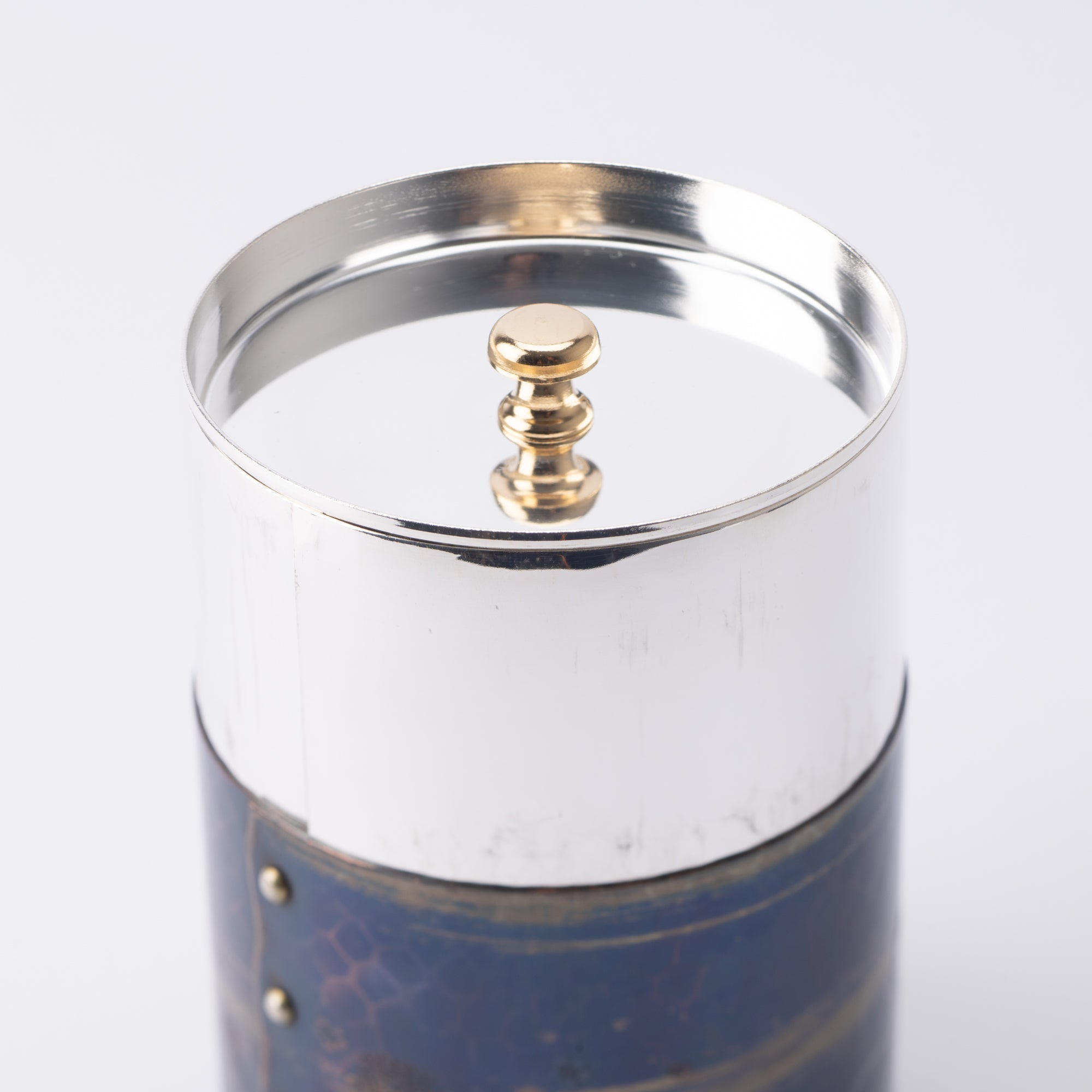
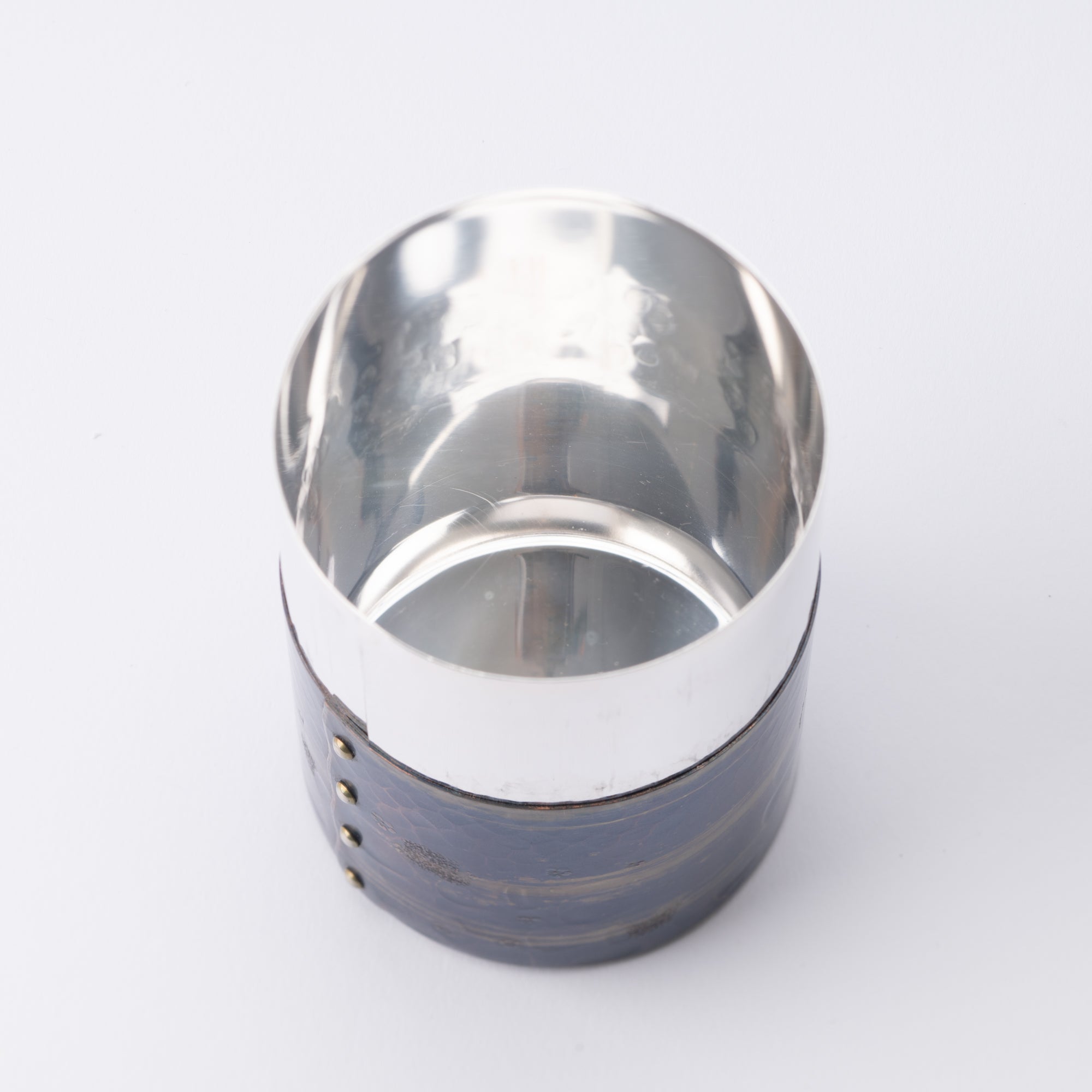
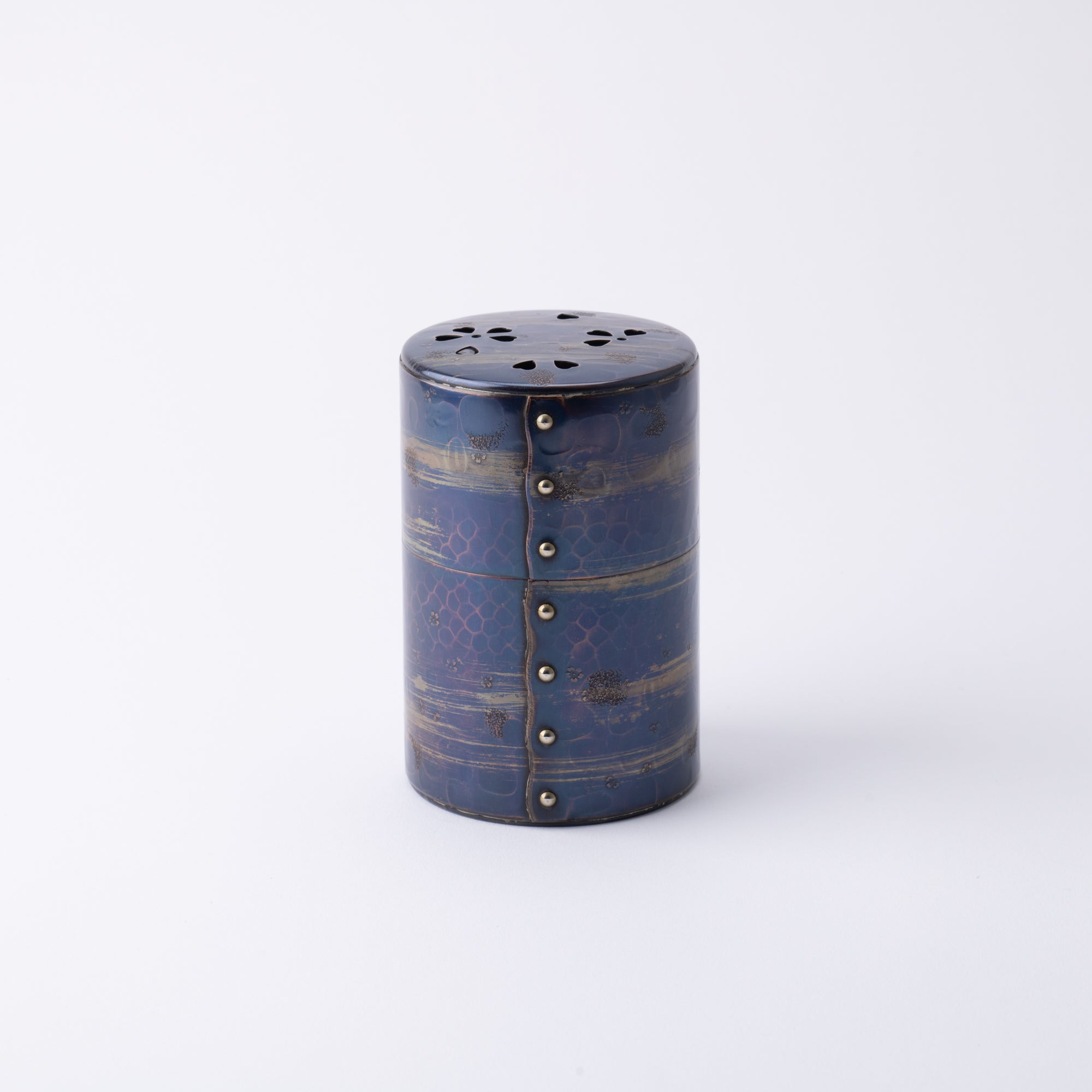
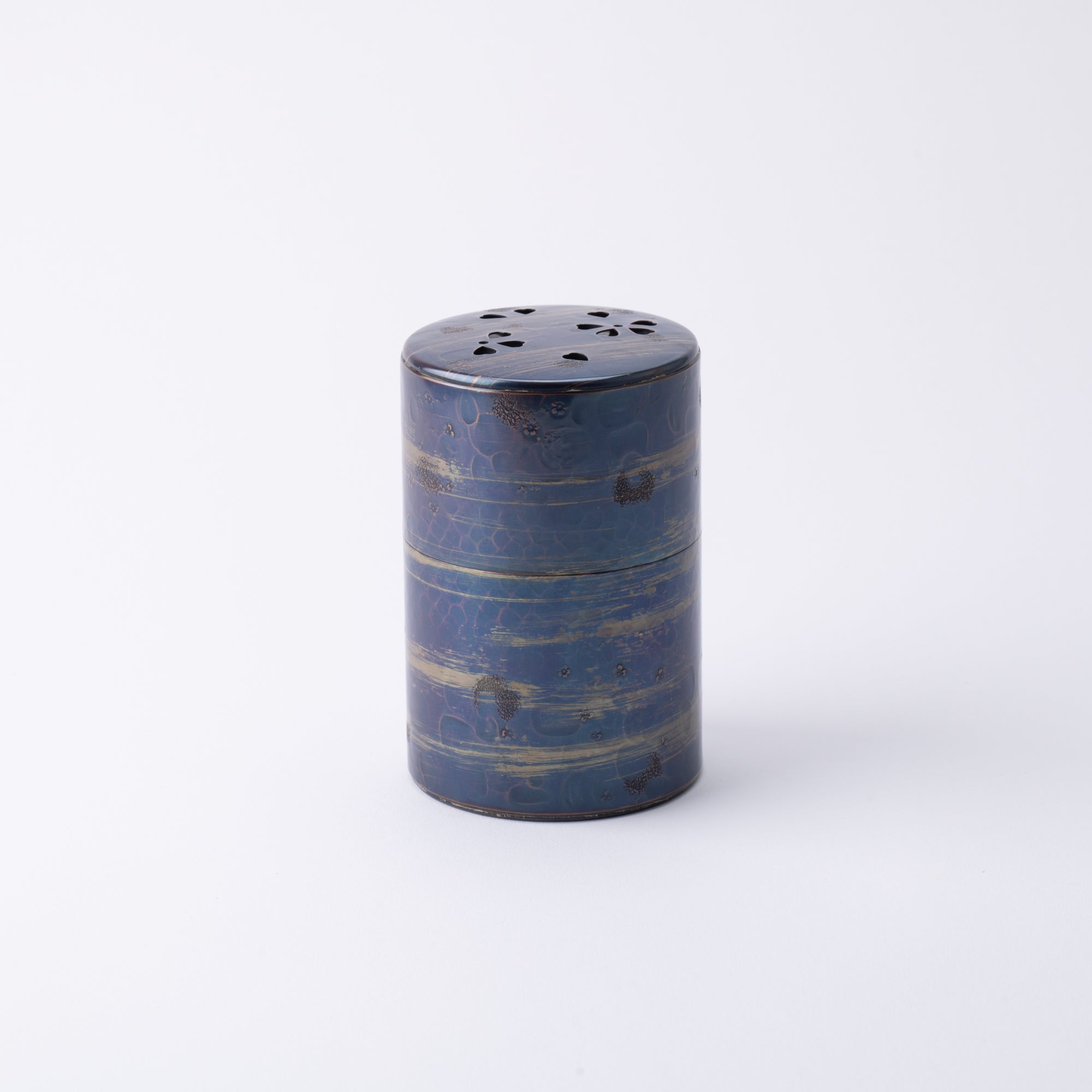
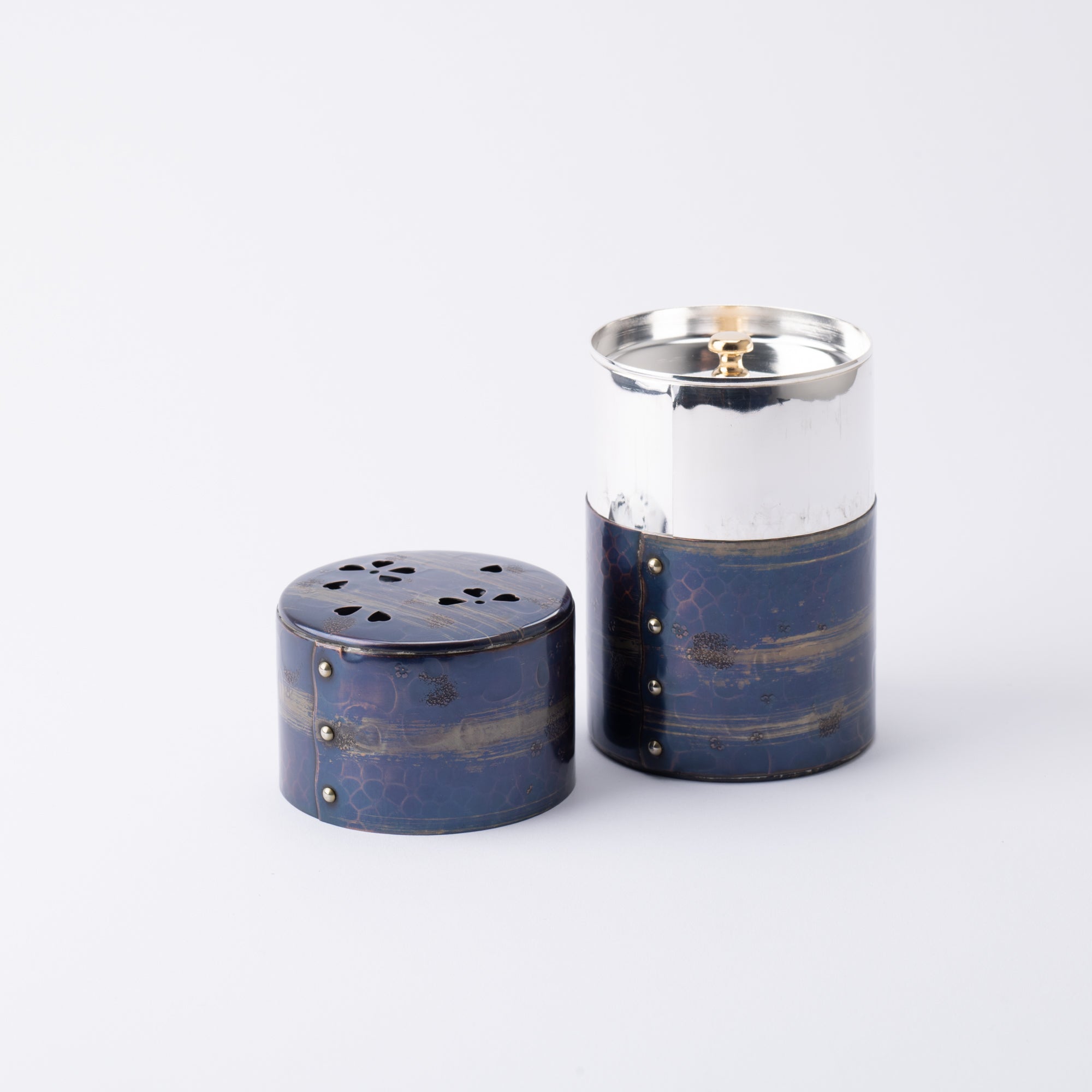
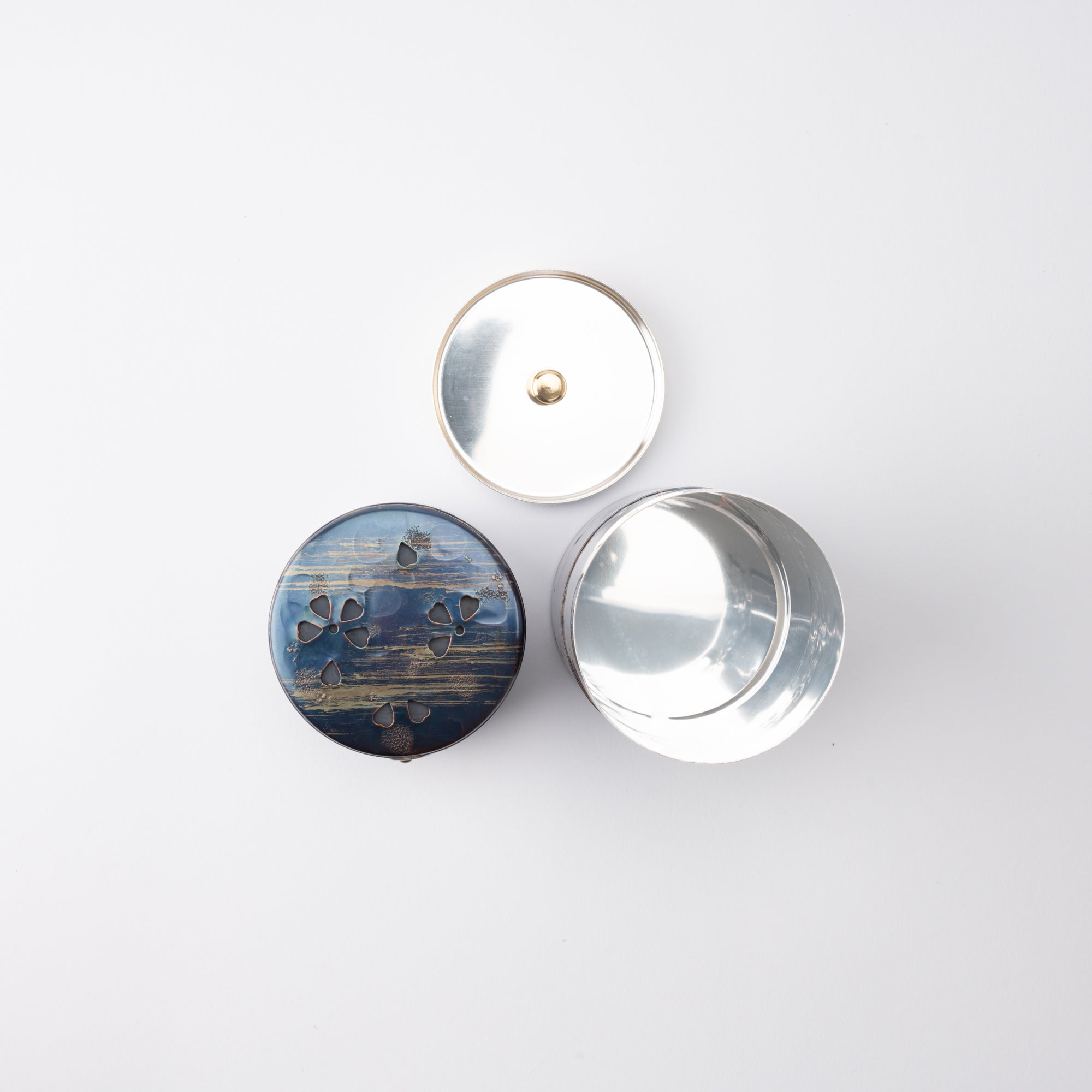
/
Seigado Sakura and Wind Pattern Copper Tea Canister
Estimated Shipping Widget will be displayed here!
This Copper Tea Canister made by Seigado, a metalworking workshop in Niigata Prefecture, features a purple-gold color. Each piece is handmade using the traditional hammering technique of "Tsuiki".
The upper lid has an incised Sakura ("cherry") blossoms pattern. The lid has a double structure with another copper plate under the incised pattern. The pattern and coloring are named "Kazemon" (wind pattern) to evoke the image of wind flowing in a purple-gold color.
This copper tea canister is hermetically sealed to keep tea leaves tasty.
The top lid should be closed in such a way that the line of the rivets is aligned with the line of the rivets on the body. Otherwise, it will be difficult to open and close the lid.
When the top lid is inserted correctly, it will drop down smoothly. After that, turn it to the right and it will stop at the point where you hear a click.
When the top lid is inserted correctly, it will drop down smoothly. After that, turn it to the right and it will stop at the point where you hear a click.
This beautiful purple-gold coloration is the result of very delicate work. The surface of the copper is alloyed by baking tin onto the surface, and the plate is processed and formed.
This traditional coloring technique is used for hammered copperware, which develops a deep blue color and also appears pale green when exposed to sunlight. As it is used with care, it becomes more austere and atmospheric, and its color changes to a deeper shade.
This traditional coloring technique is used for hammered copperware, which develops a deep blue color and also appears pale green when exposed to sunlight. As it is used with care, it becomes more austere and atmospheric, and its color changes to a deeper shade.
Seigado has a workshop at the foot of Mt. Yahiko in Niigata Prefecture, where high quality copper was discovered about 300 years ago and "Tsuiki'', the technique of hammering copperware has developed since then.
PRODUCT DETAIL
- Dimension: D 7.7 cm (3 in) × H 11 .7 cm (4.6 in)
- Capacity: 150g(0.3lb)
- Material: Copper
- Origin: Made in Japan
- Brand: Seigado
![]()
Choose options


















Seigado Sakura and Wind Pattern Copper Tea Canister
Sale price$310.00 USD
Estimated Shipping Widget will be displayed here!
International Shipping
Multiple International Shipping Options
Discounted shipping for over 500000!
Free shipping for over 5000000!
Insured shipping service
Full compensation for any damage during transit.
Made by Japanese craftsmen
Fair Pricing, free Furoshiki wrapping!

